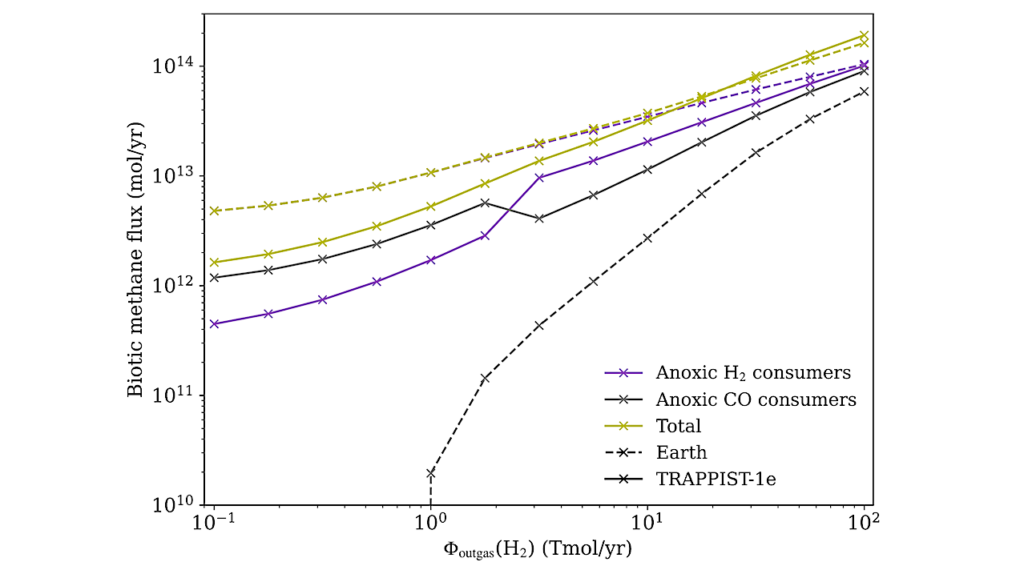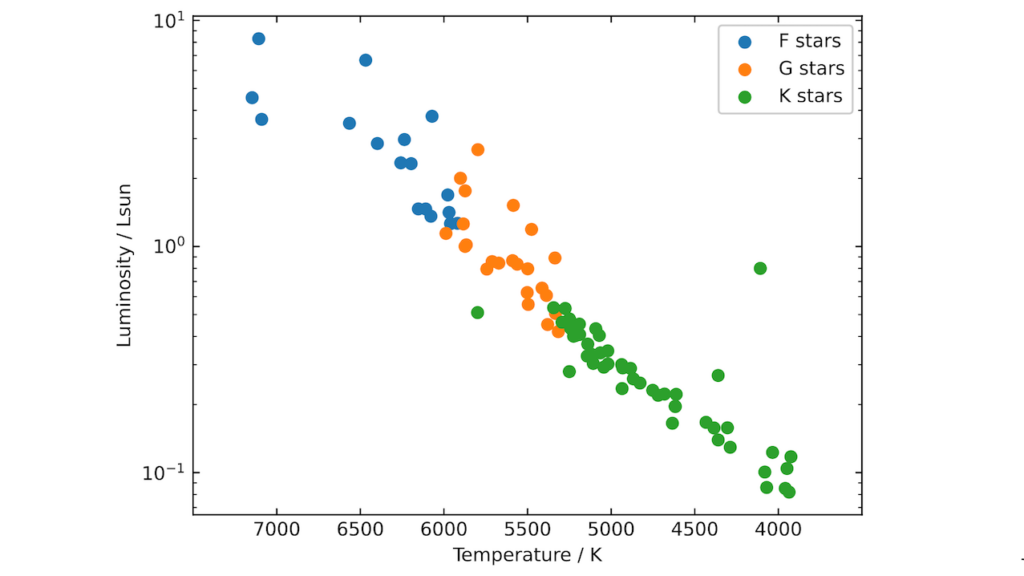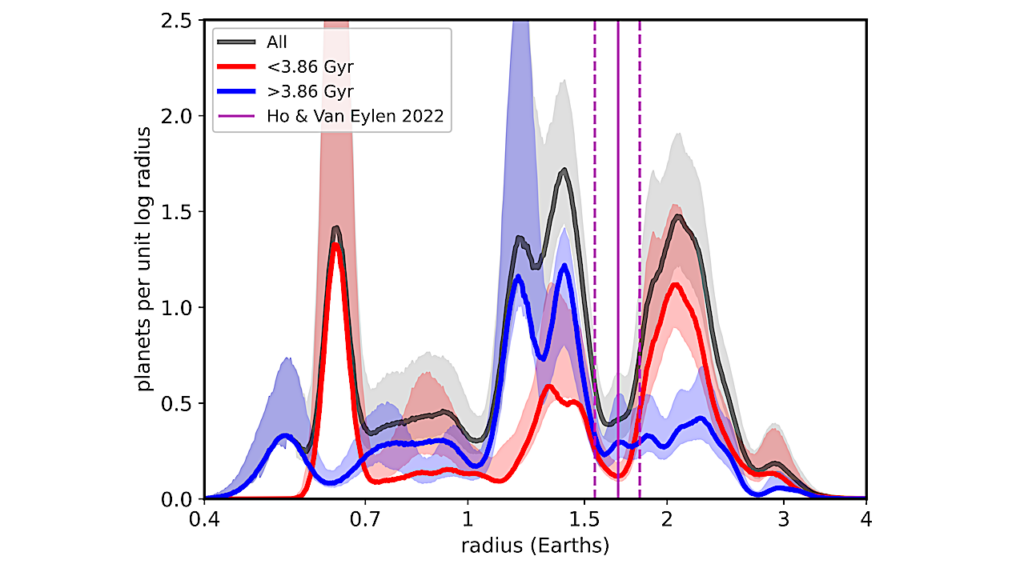Five Carbon- and Nitrogen-bearing Species In A Hot Giant Planet's Atmosphere

The atmospheres of gaseous giant exoplanets orbiting close to their parent stars (hot Jupiters) have been probed for nearly two decades.
They allow us to investigate the chemical and physical properties of planetary atmospheres under extreme irradiation conditions. Previous observations of hot Jupiters as they transit in front of their host stars have revealed the frequent presence of water vapour and carbon monoxide in their atmospheres; this has been studied in terms of scaled solar composition under the usual assumption of chemical equilibrium.
Both molecules as well as hydrogen cyanide were found in the atmosphere of HD 209458b, a well studied hot Jupiter (with equilibrium temperature around 1,500 kelvin), whereas ammonia was tentatively detected there and subsequently refuted. Here we report observations of HD 209458b that indicate the presence of water (H2O), carbon monoxide (CO), hydrogen cyanide (HCN), methane (CH4), ammonia (NH3) and acetylene (C2H2), with statistical significance of 5.3 to 9.9 standard deviations per molecule.
Atmospheric models in radiative and chemical equilibrium that account for the detected species indicate a carbon-rich chemistry with a carbon-to-oxygen ratio close to or greater than 1, higher than the solar value (0.55). According to existing models relating the atmospheric chemistry to planet formation and migration scenarios, this would suggest that HD 209458b formed far from its present location and subsequently migrated inwards. Other hot Jupiters may also show a richer chemistry than has been previously found, which would bring into question the frequently made assumption that they have solar-like and oxygen-rich compositions.
Paolo Giacobbe, Matteo Brogi, Siddharth Gandhi, Patricio E. Cubillos, Aldo S. Bonomo, Alessandro Sozzetti, Luca Fossati, Gloria Guilluy, Ilaria Carleo, Monica Rainer, Avet Harutyunyan, Francesco Borsa, Lorenzo Pino, Valerio Nascimbeni, Serena Benatti, Katia Biazzo, Andrea Bignamini, Katy L. Chubb, Riccardo Claudi, Rosario Cosentino, Elvira Covino, Mario Damasso, Silvano Desidera, Aldo F. M. Fiorenzano, Adriano Ghedina, Antonino F. Lanza, Giuseppe Leto, Antonio Maggio, Luca Malavolta, Jesus Maldonado, Giuseppina Micela, Emilio Molinari, Isabella Pagano, Marco Pedani, Giampaolo Piotto, Ennio Poretti, Gaetano Scandariato, Sergei N. Yurchenko, Daniela Fantinel, Alberto Galli, Marcello Lodi, Nicoletta Sanna, Andrea Tozzi
Comments: As part of the Springer Nature Content Sharing Initiative, it is possible to access a view-only version of this paper by using the following SharedIt link: this https URL
Subjects: Earth and Planetary Astrophysics (astro-ph.EP); Solar and Stellar Astrophysics (astro-ph.SR)
Journal reference: Nature 592, 205-208 (2021)
DOI: 10.1038/s41586-021-03381-x
Cite as: arXiv:2104.03352 [astro-ph.EP] (or arXiv:2104.03352v1 [astro-ph.EP] for this version)
Submission history
From: Paolo Giacobbe
[v1] Wed, 7 Apr 2021 19:06:13 UTC (4,035 KB)
https://arxiv.org/abs/2104.03352
Astrobiology, Astrochemistry,








